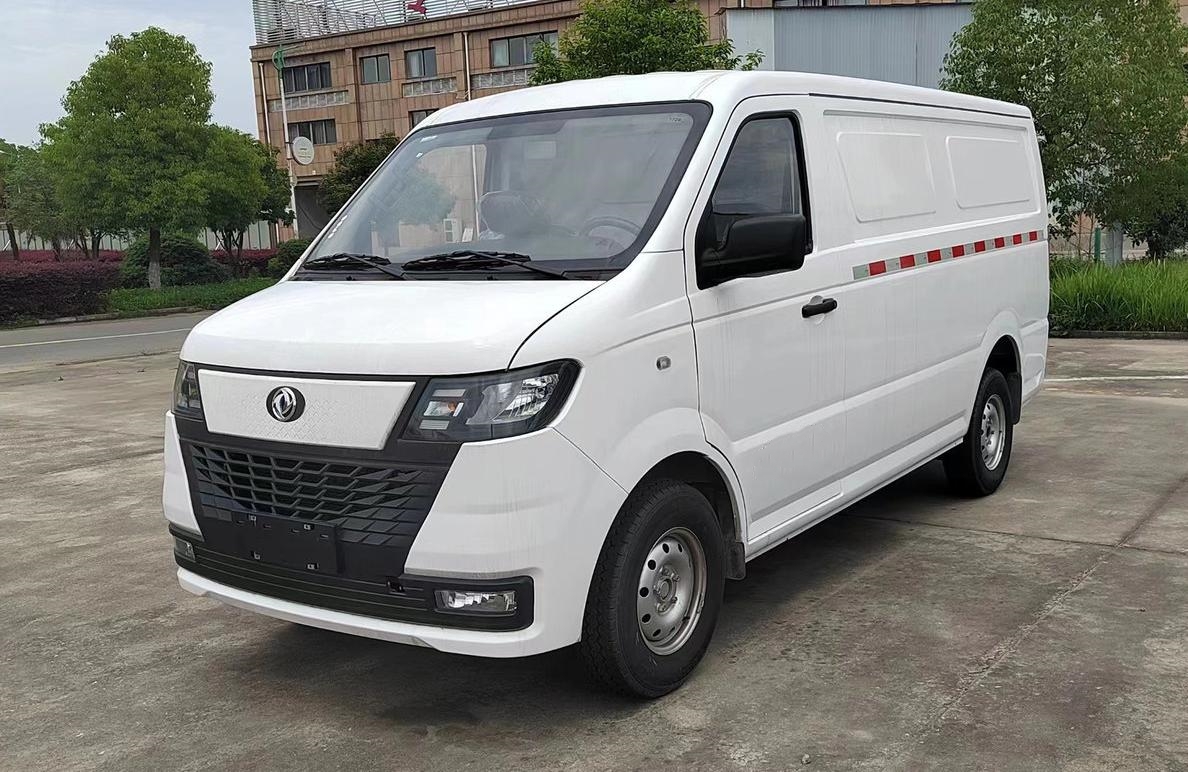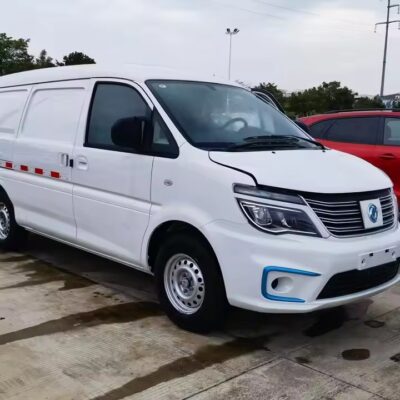Njohuri për kamionët elektrikë
Study on the Standard System of Electric Vehicle Electric Drive Systems
Introduction
With the rapid development of the automjeti elektrik industry, the electric drive system sector has also made significant progress. Product technology continues to improve, the scale of industrial development is expanding, and new materials and processes are emerging. The trend of integration is becoming more evident.
Due to the complexity of automjeti elektrik driving demands and operating conditions, traditional electric drive systems can no longer meet the needs of automjeti elektriks. High voltage, high speed, and high efficiency have become the main characteristics of electric drive systems for electric vehicles. To ensure the performance and safety of electric drive systems, as well as to enhance product technology, China has established a relatively comprehensive standard system for drive motors. This system plays a regulatory and guiding role in promoting technological advancements in motor products, accelerating safety improvements, and ensuring effective testing. However, as product technology continues to advance, the standards must also be continuously updated and improved.
1. Structure of the Electric Drive System
The electric drive system of an electric vehicle consists of a drive motor for power output, a power converter (inverter) for electrical energy conversion, and a motor controller. It serves as the primary driving source of an electric vehicle, enabling various functions such as driving, acceleration, deceleration, and reversing under different conditions.
The motor controller typically consists of a DC link, power electronic circuits, and an electronic control unit. It receives communication interface signals or pedal analog inputs, as well as output signals from the rotor position sensor and cooling temperature sensor of the drive motor. By processing these inputs along with the driver’s commands and vehicle status information, the controller sends feedback to the power electronic circuits. The power electronic circuits then transmit electrical energy to the drive motor, ensuring its normal and controlled operation.
2. Status of China’s Electric Drive System Standard System
At present, China has established a relatively complete standard system for electric vehicles, which includes four major categories: general foundational standards, complete vehicle standards, key system and component standards, and interface and infrastructure standards. The electric drive system standard system is an essential part of the electric vehicle standard system and belongs to the category of key systems and components.
The electric drive system standard system consists of three main categories of standards: general foundational standards, product specification standards, and testing method standards. The implementation of these standards ensures product quality and technological depth from three dimensions: products, testing, and management.
2.1 General Foundational Standards
The general foundational standards define the technical requirements, fault classification, and system interfaces for electric drive systems. These standards ensure the basic functionality and safety of electric drive systems.
2.1.1 Voltage Resistance Characteristics of Electric Drive Systems
Currently, China’s electric passenger vehicles typically operate at voltage levels of around 300V–500V, while commercial vehicles operate at 500V–800V. Since the electric drive system directly utilizes high-voltage electricity, the drive motor windings and power electronic circuits must withstand high-voltage shocks. The transient voltage changes and surges make the voltage resistance requirements for power components significantly higher than the rated DC bus voltage.
To ensure that the electric drive system is not damaged in cases of short circuits between winding wires, between windings and the motor housing, or between windings and temperature sensors, national standards specify voltage resistance requirements for drive motors and motor controllers. These include inter-turn impulse voltage resistance and power frequency voltage resistance, with clear calculation methods for different parts’ AC voltage endurance values.
2.1.2 Electrical Safety Characteristics of Electric Drive Systems
Electric drive systems operate in high-voltage environments for long periods, making electrical safety a key concern. To prevent electric shock, insulation resistance is incorporated into the system. Even in the event of a short circuit, this ensures personnel safety.
Insulation resistance is the last line of defense protecting individuals from electric vehicle high-voltage circuits. National standards define insulation resistance values for drive motors and motor controllers, ensuring safety.
To balance the load between the DC and AC sides of the electric drive system, support capacitors are installed for filtering and energy storage. To protect human safety, inverters typically include discharge circuits to reduce capacitor voltage. Standards specify that passive discharge must not exceed 5 minutes, while active discharge must lower the DC side capacitor voltage to 60V within 3 seconds.
2.1.3 Fault Classification and System Interfaces of Electric Drive Systems
Drive motors must communicate electronically, accept electrical signal inputs, and output mechanical power. Inconsistent interfaces can cause interchangeability and compatibility issues. QC/T 896-2011 “Electric Drive Motor System Interfaces for Electric Vehicles” provides industry-wide guidelines for electrical interfaces, power electrical connections, and control signal connections.
QC/T 893-2011 “Fault Classification and Diagnosis of Electric Vehicle Drive Motor Systems” defines fault classification principles and categories. It includes normative appendices detailing fault modes such as damage faults, degradation faults, loosening faults, misalignment faults, blockage and leakage faults, and performance degradation or functional failure faults. However, as technology evolves, the current standard lacks coverage of communication-related faults and fault diagnostics, highlighting the need for updates.
2.2 Product Standards
Product standards build upon general foundational standards and define product-specific requirements, forming the core of the electric drive system standard system. With increasing integration levels, integrated products are becoming mainstream in vehicle applications. Product standards can be classified into standalone product standards and integrated product standards.
2.2.1 Standalone Product Standards
Standards have been established for widely used motor types, such as asynchronous motors and permanent magnet synchronous motors, as well as for motor controllers with charging and discharging capabilities.
Standards specify requirements such as tolerance levels for no-load current, locked-rotor current for asynchronous motors, and limits for back EMF, no-load loss, permanent magnet aging, and demagnetization for permanent magnet synchronous motors.
With vehicle-to-grid (V2G), vehicle-to-load (V2L), and vehicle-to-vehicle (V2V) functionalities becoming key features of electric vehicles, QC/T 1088-2017 “Technical Requirements for Electric Vehicle Charging and Discharging Motor Controllers” includes performance specifications for these discharging modes.
2.2.2 Integrated Product Standards
Integration is a key development trend for electric drive systems. Integrated products offer smaller size, lower weight, and cost savings, benefiting vehicle performance. Standards such as QC/T 1022-2015 “Technical Requirements for Reduction Gear Assemblies in Electric Passenger Vehicles” and QC/T 1086-2017 “Technical Requirements for Range Extenders in Electric Vehicles” define requirements for reduction gears and range extenders.
2.3 Testing Standards
Testing standards ensure the implementation of technical requirements. These include reliability testing and electromagnetic compatibility (EMC) testing.
2.3.1 Reliability Testing
Reliability is a major focus in product development. National standards define reliability tests based on vehicle type (passenger, commercial, hybrid) with specific test cycles, requiring a total operation time of 402 hours.
2.3.2 EMC Testing
Drive motor systems contain high-power electronic components, generating significant electromagnetic emissions that may interfere with vehicle electronics, nearby equipment, or other vehicles. National standards regulate electromagnetic emissions (EMI) and susceptibility (EMS) for drive systems, outlining test setups using double-ridged waveguide horns and BCI methods.
3. International Standardization Trends
Internationally, organizations such as ISO, IEC, Japan’s MLIT, and ECE have developed extensive standards for electric drive systems. ISO/TC22/SC37 and IEC/TC69 focus on standardizing electric vehicle components, while Japan and ECE have issued performance test procedures for drive motors.
4. Conclusion
Electric drive system standards are critical to electric vehicle standardization, guiding safety, performance, and testing. While China’s system primarily evaluates individual components, the growing prevalence of integrated systems highlights the need for new test methods. Strengthening engagement with ISO and IEC will enhance China’s influence in global standardization efforts.



